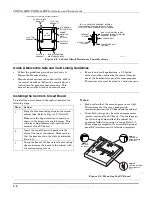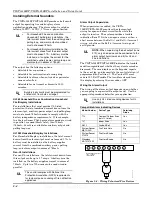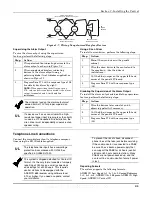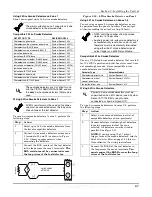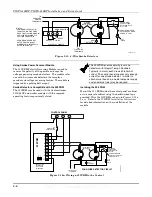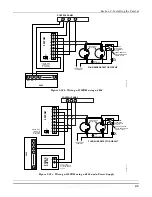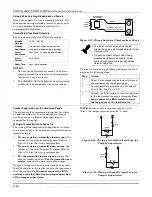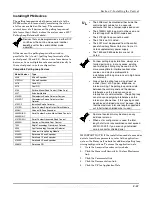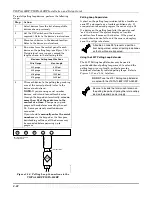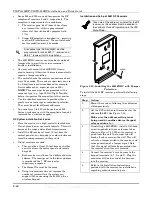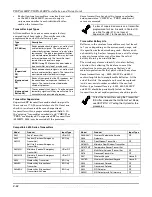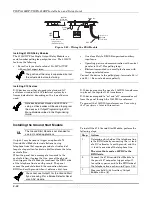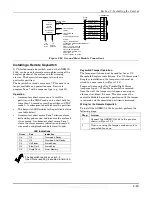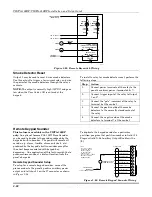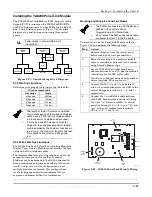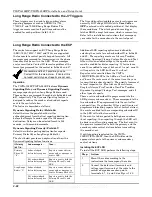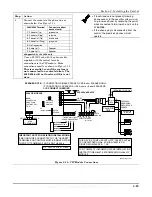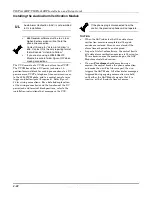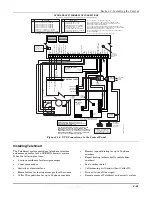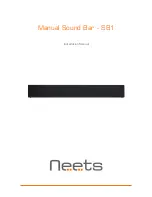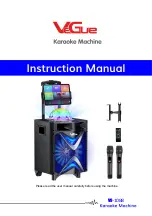
VISTA-128BP/VISTA-250BP Installation and Setup Guide
3-16
•
For button-type transmitters (wireless keys), such
as the 5804 and 5804BD, you must assign a
unique zone number to each individual button
used on the transmitter.
Transmitter Input Types
All transmitters have one or more unique factory-
assigned input (loop) codes. Transmitters can be
programmed as one of the following types:
Type
Description
RM
(RF Motion)
Sends periodic check-in signals, as well as fault
and low-battery signals. The control panel
automatically restores the zone to “ready” after a
few seconds. This type is designed for facilities
with multiple motion detectors that may fault and
restore simultaneously. The transmitter must
remain within the receiver’s range.
NOTE:
If using RF Motion with a door/window
type transmitter, only loop 1 may be used.
RF
(Supervised
RF)
Sends periodic check-in signals, as well as fault,
restore, and low-battery signals. The transmitter
must remain within the receiver’s range.
UR
(Unsupervised
RF)
Sends all the signals that the RF type does, but
the control does not supervise the check-in
signals. The transmitter may therefore be
carried off-premises.
BR
(Unsupervised
Button RF)
These send only fault signals. They do not send
low-battery signals until they are activated. The
transmitter may be carried off-premises.
Transmitter Supervision
Supervised RF transmitters send a check-in signal to
the receiver at 70–90 minute intervals. If at least one
check-in is not received from each supervised
transmitter within a programmed period (field 1
∗
31),
the “missing” transmitter number(s) and “CHECK” or
“TRBL” are displayed. Unsupervised RF transmitters
(5802MN, 5804) may be carried off the premises.
Some transmitters have built-in tamper protection,
and annunciate a “CHECK” or “TRBL” condition if
covers are removed.
If a loss of supervision occurs on a transmitter
programmed for Fire, it reports in Contact ID
as a Fire Trouble (373), not Loss of
Supervision (381), to the central station.
Transmitter Battery Life
Batteries in the wireless transmitters may last from 4
to 7 years, depending on the environment, usage, and
the specific wireless device being used. Factors such
as humidity, high or low temperatures, as well as large
swings in temperature may all reduce the actual
battery life in a given installation.
The wireless system can identify a true low battery
situation, thus allowing the dealer or user of the
system time to arrange a change of battery and
maintain protection for that point within the system.
Some transmitters (e.g., 5802, 5802CP, and 5803)
contain long-life but nonreplaceable batteries. At the
end of their life, the complete unit must be replaced
(and a new serial number enrolled at the control).
Button-type transmitters (e.g., 5801, 5802, 5802CP
and 5803) should be periodically tested, as these
transmitters do not send supervisory check-in signals.
To test the transmitters using the Transmitter
ID Sniffer mode and the Go/NoGo Test Mode,
see
SECTION 10: Testing the System for the
procedures.
Compatible 5800 Series Transmitters
Model Product
Input
Type
5801
Panic Transmitter
UR or RF
5802
5802CP
Pendant (Personal Emergency
Transmitter)
Belt Clip (Personal Emergency
Transmitter)
BR Only
5802MN
Miniature (Personal Emergency
Transmitter)
UR or RF
5802MN2
Miniature (Personal Emergency
Transmitter)
UR or RF
5804
Wireless Key Transmitter
BR Only
5804BD
Wireless Key Bi-directional
Transmitter
BR Only
5804BDV
Wireless Key Bi-directional
Transmitter with Voice
BR Only
Model Product
Input
Type
5806/5807/
5808
Wireless Photoelectric Smoke
Detectors
RF
5816 Door/Window
Transmitter
RF
5816MN
Miniature Door/Window Transmitter
5816TEMP
Temperature Sensor Transmitter
5817
Multi-Point Universal Transmitter
RF
5818 Recessed
Transmitter
RF
5827
Wireless Keypad
House ID
5827BD
Wireless Bi-directional Keypad
House ID
5849 Glassbreak
Detector
RF
5850 Glassbreak
Detector
RF
5890 PIR
Detector
RF
5890PI
PIR Detector with Pet Immunity
RF
WWW.DIYALARMFORUM.COM
WWW.DIYALARMFORUM.COM

